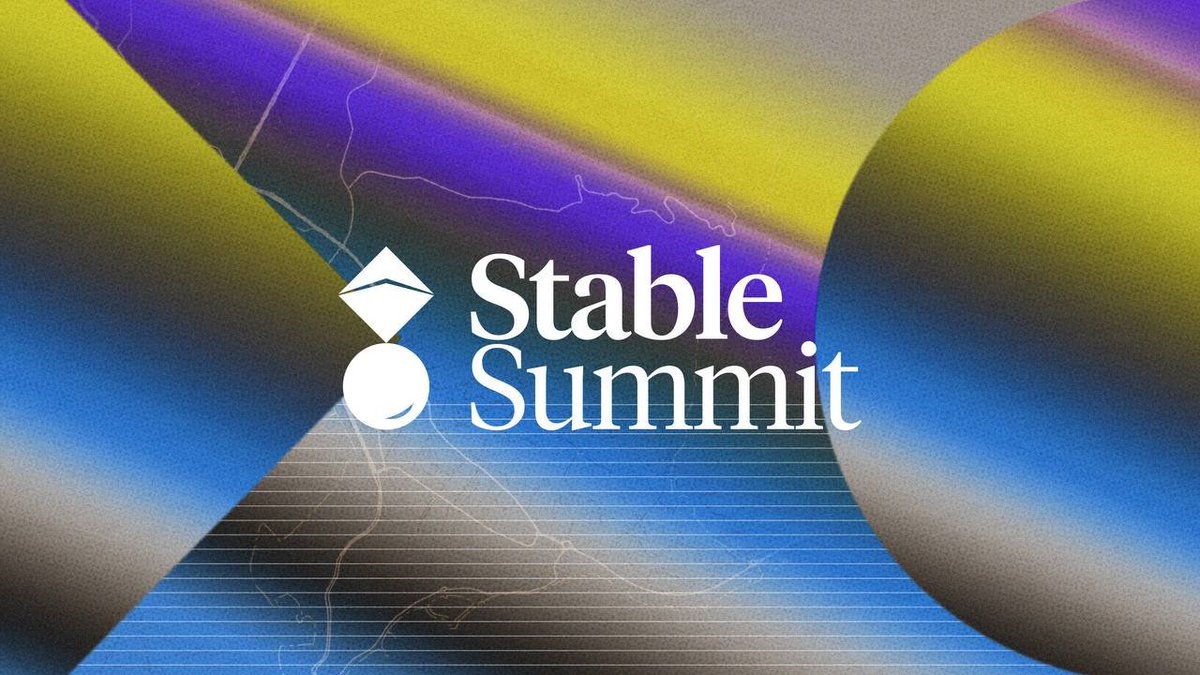There’s something poetic about talking about monetary stability while yachts drift by in the background.
The energy was different this year. Everyone showed up with real volume, real users, and real questions. @Circle is being integrated by @stripe. @RevolutApp has a stablecoin play. @Tether_to is issuing gold. @jpmorgan beat everyone to market with a deposit token. The line between fintech and stablecoin has officially blurred.
The Stable Summit in Cannes marked this shift. Here’s what stood out on Day 1 👇

🧪 Vaults, Yields, and How Much Risk Is Too Much
We’ve come a long way since Maker’s DSR.
The current wave of stablecoin strategies is more ambitious, more composable and, in many cases, more fragile.
Every asset manager in the room has a vault strategy now. Whether it’s tokenized T-bills, curated private credit, or wrapped staking rewards, the goal is the same: generate yield with a stable face.
But as some speakers pointed out, we’re not pricing that risk clearly.
Some vaults carry real off-chain exposure such as private credit deals, wrapped tokens, even GPU-backed loans.
The risk doesn’t surface slowly. It breaks all at once.
There’s no panic yet, but there is awareness. Stablecoin yield is no longer the safe corner of crypto. It’s where you need to ask the most questions.
🏦 Private Credit Is Winning
Everyone’s eyes were on tokenized Treasuries.
But the numbers from @nomos_paradox, @ChronicleLabs told a different story: tokenized private credit is already twice the size.
While T-bills get the headlines, real-world lending platforms like @maplefinance, @centrifuge and @superstatefunds
have been onboarding borrowers, underwriting deals and growing fast.
If stablecoins were DeFi’s first export to the real economy, tokenized credit is quickly becoming the second.
🏛️ Banks Are Nervous. And They Should Be.
Charles-Enguerrand Coste (@Discobanker) from @ecb offered a rare dose of honesty: stablecoins are draining deposits from the banking system.
In the EU, regulators tried to contain it by requiring issuers to hold 30% of reserves in bank deposits. Japan went further—100%—before walking it back. It didn’t work.
Stablecoin capital is just too flighty. It moves fast, it chases yield, and it doesn’t sit still on a bank balance sheet.
Stablecoins offer instant settlement, global access, and real-time liquidity.
Banks offer… interest-free checking accounts and weekend delays.
There’s no war here. But there is pressure.
And the more capital moves onchain, the less relevant traditional deposit systems become.
🌊 No One Talks About Speed Anymore. Just Liquidity.
One of the most sobering takeaways came from the DeFi + RWA panel.
Despite all the L1 and L2 battles happening online, institutions aren’t choosing chains based on TPS.
They’re choosing based on liquidity, regulation, and integration.
Ethereum is slow but it’s deeply connected.
The assets, the bridges, the wallets, the stablecoins; all live there.
That’s where business happens. That’s where risk is hedged, not just chased.
Solana may be faster. But Ethereum is sticky.
💱 We Still Don’t Have a Unified Money Layer
@SebVentures from @SteakhouseFi gave a crash course in monetary history, drawing a parallel to 1800s Scotland, where competing banks finally agreed to clear each other’s notes 1:1.
That’s what enabled true financial interoperability. We’re not there yet in crypto.
Today, USDC ≠ PayPal USD ≠ Dai ≠ sUSD. Stablecoins don’t clear at par.
Every swap comes with slippage, every transaction with UX friction.
And for institutions or enterprises that want deterministic finance, that’s still a problem.
The challenge is to make stablecoins behave like one.
📊 Stablecoins, Stablecoins, Stablecoins
The clearest sign that stablecoins are having their moment?
Nobody's calling them a "use case" anymore.
They're just there. Inside remittances, inside fintech apps, inside onchain treasuries, inside off-chain payroll systems.
What the summit made obvious is that we’re past the phase of proving stablecoins work.
The market has moved on to building with them structuring portfolios, designing liquidity strategies, writing policy, and onboarding users who never need to know what a wallet is.
The rails are getting laid. The volume is flowing.
The next layer of finance is being shaped, not by hype, but by stability.
Welcome to Stablecoin Summer.
And stay tuned for the video drops very soon!
3.45K
2
The content on this page is provided by third parties. Unless otherwise stated, OKX is not the author of the cited article(s) and does not claim any copyright in the materials. The content is provided for informational purposes only and does not represent the views of OKX. It is not intended to be an endorsement of any kind and should not be considered investment advice or a solicitation to buy or sell digital assets. To the extent generative AI is utilized to provide summaries or other information, such AI generated content may be inaccurate or inconsistent. Please read the linked article for more details and information. OKX is not responsible for content hosted on third party sites. Digital asset holdings, including stablecoins and NFTs, involve a high degree of risk and can fluctuate greatly. You should carefully consider whether trading or holding digital assets is suitable for you in light of your financial condition.

